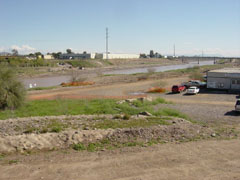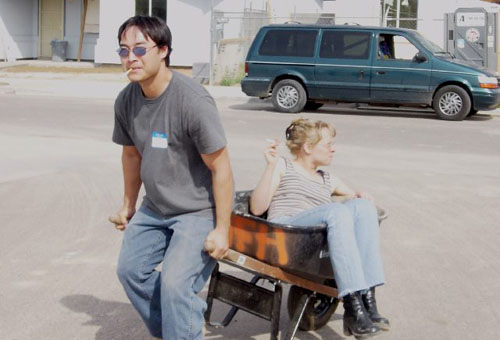|
|
|
Environmental Justice
When
Sara Grineski came into class on the fourth of February, I was
already looking forward to the presentation on environmental
justice. She exceeded my expectations with a very information dense
delivery. Her main point was to make us aware of th First, I had no idea that the railroad had quite the impact that it did on the development of the South Phoenix area. Obviously the railroad coming anywhere for the first time is going to bring change, but to drastically cut the trade ties from North/South (Sonora, Mexico) to East/West (L.A. and the U.S. East coast) is pretty major. The language of trade, the items traded, the culture of the trading would all change severely. First you had strong trade with Mexico, keeping the Mexican people important, and making the relationships at the border necessary to keep up. Then all of a sudden all trade is with White Americans from both US coasts who are now able to provide goods at a cheaper cost than the previous trade lines had allowed. It had a major impact on international relations in that area. Also, I had no idea of the tent camps. I think most people who have lived in Arizona for any length of time have heard about the health movement and all the allergy/T.B. and other respiratory illness afflicted folks who moved to the dry climate to ease their suffering; but I had never considered the idea that there was not enough housing for all these people, or that so many of them would be too poor upon arrival to buy or build a home. The notion of the nine miles of tent camps up along what is now Cave Creek Rd through the Sunny Slope area in the time of WWI is amazing. No wonder the illnesses (mostly T.B.) brought here spread among the healthy. This is also a display of neglect in that the government didn’t produce aid to help get these people on their feet and in better shape.
Also
fascinating to me was the heavy and deliberate ignoring of South
Phoenix as the city grew. In particular, the point Ms. Grineski
made about Most of Phoenix having A/C units installed by 1955 when
much of South Phoenix didn’t even have electricity or running
water. This is borderline criminal neglect. It really emphasises
the point from the reading that there was this major attitude of
Phoenix being built by Anglos for Anglos. There was little concern
for the people who had helped pave the way if those people were not
White. This point was carried even further by the realisation that
a branch of the KKK managed to get set up in Phoenix and even run a
small periodical when other AZ cities (Tucson and Prescott) had
drummed them right out of town.
Both the reading and the presentation also brought up all the Federal funding involved in getting Phoenix rolling as a whole. But I found it most interesting the way Ms. Grineski described the reasoning behind the decline of a large Federal grant for “Slum Clearance” due to the city’s resistance to conforming to Federal regulations allowing inspectors to actually enter the premises to do their inspections! The grant would have allowed $200,000 to help upgrade the area of South Phoenix. The last point I’ll bring up that was interesting to me is how the residents of Northern Phoenix were so separated from those in the south, that they had the cattle (which was kept in South Phoenix) crop dusted with lavender perfume so they wouldn’t have to deal with the smell wafting north! Amazing. I got a lot out of that presentation. More than I can write in a short paper. It was as informative as you could hope for, and interesting as well!
|
|
| Back to South Phoenix 2005 | |


